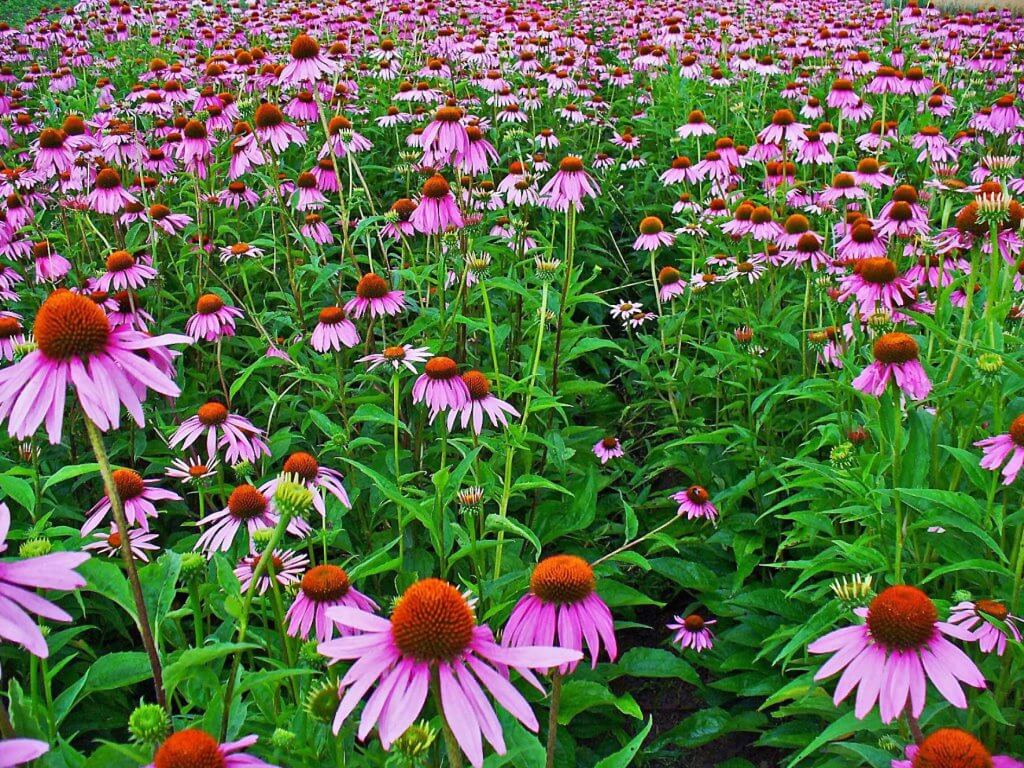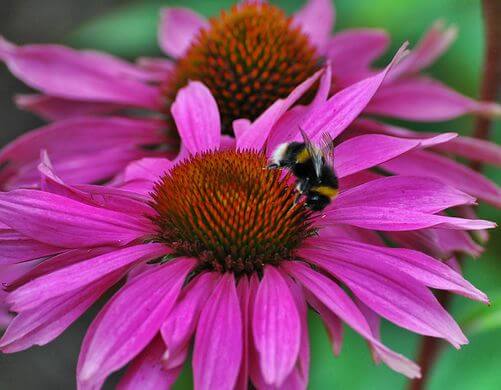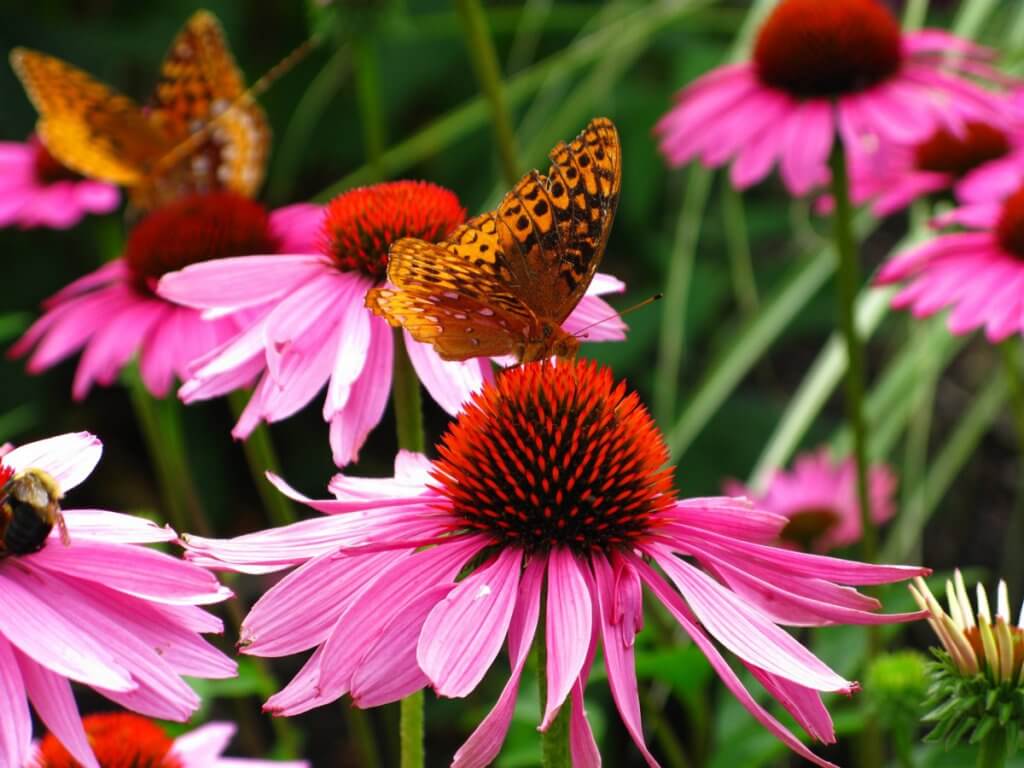
(Photo by: H. Zell/Wikimedia Commons)
Purple coneflowers or echinacea (Echinacea purpurea) boomed into popularity in the 1990s and early 2000s. This North American herb gained attention due to its medicinal benefits. At the height of its popularity, this herb can be found easily in pharmacies in the form of herbal supplements and as a part of various medications. Now echinacea is not as popular as it used to be, but its medicinal properties still remain, waiting to be utilized.
Edibility and culinary use
Echinacea leaves, flowers, and roots can be used to make tea and tincture. This herbal tea has a very strong floral flavor that’s somewhat bitter. It’s a flavor that takes a while to get used to. The roots are believed to have the highest concentration of active ingredients and thus, have the most benefits. However, echinacea root tisane tastes even stronger than those made of the leaves and flowers.
You can make echinacea tea more palatable by adding some sweetness. Raw honey, agave, stevia, and milk can improve the taste greatly. You can also pair it with other herbs, tea, or even fruit to mask the strong flavor and even enhance its effects. Elderberry, lemongrass, lemon balm, peppermint, and citrus fruits complement this herb nicely.
Health benefits
Native Americans started using echinacea as a painkiller thousands of years ago. It can alleviate toothache, stomach aches, sore throats, headaches, and many more. Additionally, it also has antimicrobial and anti-inflammatory properties. This herb is commonly used to treat and prevent the common cold and flu as well as other respiratory problems. Moreover, this herb can also fight off inflammation, infections, and treat conditions such as rheumatoid arthritis, ulcers, Crohn’s disease, typhoid, vaginal yeast, malaria, herpes, and many more.

(Photo by: Dun.can/Flickr)
Much like other herbal teas, echinacea tea can reduce anxiety and stress. Additionally, this herb can also help control blood sugar levels. Echinacea prevents blood sugar levels from spiking in diabetic patients and also prevents it from dropping in hypoglycemic people. It can also lower blood pressure and reduce hypertension symptoms. Lastly, its antioxidant contents help promote new cells growth and prevent cancer. Some scientists even think that it may be used to combat cancer in the future.
Cultivation
Echinacea is a staple in most gardens, as both a medicinal herb and as an ornamental plant. Its daisy-like flowers look beautiful and vibrant. These purple flowers are also full of nectar and they attract pollinators, like bees and butterflies, very easily. Cultivating this plant isn’t difficult. It requires little maintenance and drought-resistant.
Echinacea isn’t very picky about soil types. But, it thrives best on rich, well-drained soil. For the best results, plant echinacea in a spot that gets at least five hours of sunlight. This plant can tolerate partial shade, but it may flop and produce fewer blooms. They’re drought-resistant but will appreciate regular watering. The seedlings need to be watered daily, but as they mature, they’ll only need to be watered once or twice a week. Fertilizing the plants every spring will ensure healthy foliage and blooms.
Sow them indoors or inside a greenhouse in the all. They will germinate within three weeks. Then, once they’re large enough to handle, separate and place them into individual pots. Transfer them outside to their permanent locations in spring, after the last frost date. Plant them 1’ to 2’ apart from each other.
The flowers will start to bloom within 90 to 120 days. At that point, you may start harvesting its leaves and flowers. However, you might need to wait a couple of years before harvesting the roots.
Cautions

(Photo by: ForestWander/Wikimedia Commons)
This herb is not recommended for extended use. Prolonged consumption may suppress the immune system. It might even make autoimmune conditions, such as lupus and rheumatoid arthritis, worse. If you have autoimmune diseases, it’s best to avoid echinacea. But if you don’t have those conditions and interested in consuming this herb as a supplement, use it for 10-14 days then stop consumption for a short while.
High doses may cause some adverse effects, such as fever, vomiting, nausea, stomach ache, sore throat, headache, and dizziness. Topical application may result in rash, itchiness, and redness. If you have allergies to other plants in the family, such as daisies and mums, avoid echinacea or check with your doctor first.
Conclusion
There’s a reason why some people call echinacea a miracle herb. It has been used for centuries by Native Americans and its medicinal benefits are undoubtedly great. Just a cup of echinacea tisane will be able to help you deal with various ailments. Cultivate this plant in your garden so you have a steady supply of this reliable medicinal powerhouse. Alternatively, you can also get echinacea supplements from the market, just make sure you get them from reputable brands and sellers.
---------------
Writen by Cornelia Tjandra
Cornelia is a freelance writer with a passion for bringing words to life and sharing useful information with the world. Her educational background in natural science and social issues has given her a broad base to approach various topics with ease. Learn more about her writing services on Upwork.com or contact her directly by email at cornelia.tjandra@gmail.com
Many of our readers find that subscribing to Eat The Planet is the best way to make sure they don't miss any of our valuable information about wild edibles.
See our privacy policy for more information about ads on this site







One Response
you can also use stevia for better health because stevia has been found to reduce bacteria in the mouth, prevent gum infections, and inhibit the growth of plaque, making it a popular additive to toothpaste and mouthwashes.